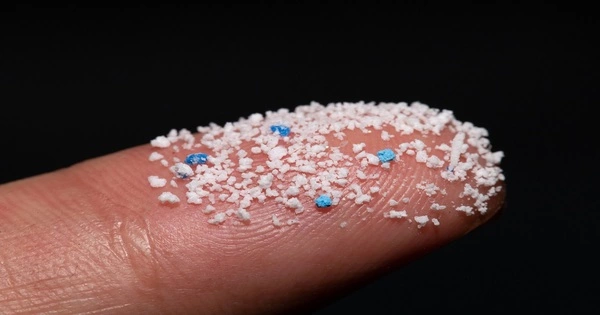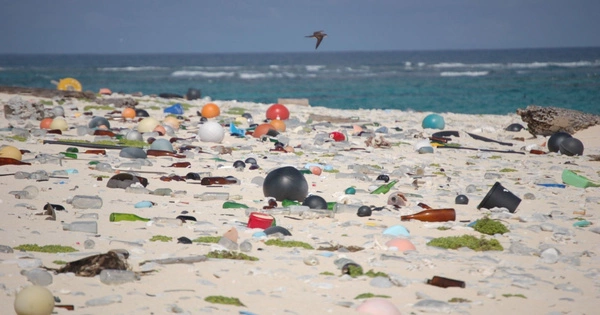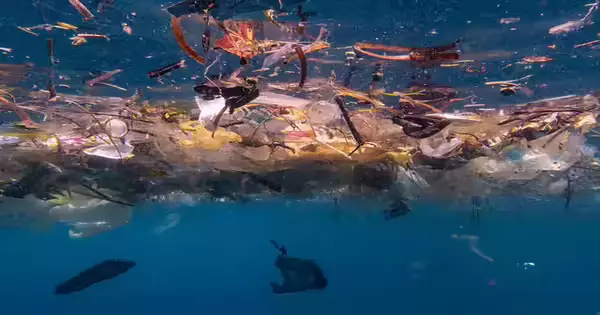Since the 1950s, the availability of single-use plastic items such as water bottles, supermarket bags, and packaging materials has increased dramatically. These things degrade into microplastics, which are now everywhere. Microplastics are microscopic fragments of plastic less than 5 millimeters long (less than half the thickness of your pinky fingernail).
Nobody knows how much microplastic has made its way into the ecosystem, but one international team of multidisciplinary scientists calculated in 2021 that there were 24.4 trillion pieces of microplastic in the world’s upper oceans alone, or the equivalent of about 30 billion plastic water bottles.

Due to their small size, microplastics are difficult to detect. For many years, researchers assumed that these tiny pieces of rubbish entered rivers and were moved downstream to the ocean in a relatively short period of time. But that is not the case. According to a new study published in Science Advances, microplastics may linger in rivers for more than 300 years before reaching the ocean. This means that microplastics in rivers have a considerably larger potential to harm individuals and the environment than experts previously imagined.
According to Lisa Erdle, Ph.D., a microplastics expert and the head of science and innovation for The 5 Gyres Institute, a U.S.-based nonprofit research group focused on plastic pollution, microplastics enter rivers in a variety of ways. During a storm, for example, tire particles and other roadway garbage might wash into rivers. Poorly filtered plastic industrial effluent is sometimes discharged directly into a river. According to Erdle, researchers see one sort of microplastic more frequently than others: microfibers, or threads shed by things like upholstery and clothing. “We wear a lot of plastic, especially fast fashion,” Erdle adds, referring to materials like polyester and nylon used to manufacture low-cost clothing that often fails after a short period of regular wear and washing.
“Plastics contain hundreds of different chemicals added to them when they’re produced,”
says Alice Horton, Ph.D., a research scientist and microplastics expert at the National Oceanography Centre
Fibers of Resistance
One of the most common types of microplastics are tiny threads from synthetic garments and fabrics. Aside from purchasing natural-fiber clothing, here’s how you may reduce the quantity of microfibers you contribute to the environment through your washing machine.
Wash similar items together.
Washing similar-material goods together reduces thread-unraveling friction.
At the very least,
Getting a cold
According to a 2020 study, washing in cold water and utilizing a shorter cycle can extend the life of your favorite pair of jeans and reduce microfiber shedding by up to 30%. Using a clothesline instead of a dryer also helps.
Capture it as soon as possible.
There are various items on the market that are meant to keep fibers out of waterways, such as tightly woven mesh bags (Guppyfriend makes one for $35) that catch threads and specialist filters for your washing machine’s discharge line.
Experts have long thought that once microplastics reach a river, they will be discharged into the ocean within days, if not hours. However, Jennifer Drummond, Ph.D., a research fellow at the University of Birmingham in the United Kingdom, and her colleagues found significant plastic retention in waterways. Microplastics do not just float on the surface or fall to the bottom due to turbulence and water mixing beneath the surface, a process known as hyporheic exchange. Instead, they travel down the river dynamically at a rate as slow as seven years per kilometer (11.2 years per mile). Simply put, “rivers aren’t pipes,” argues Drummond.
Although these waste grains are unlikely to jam waterways or clog our intestines when swallowed, microplastics can nonetheless cause harm. “Hundreds of different chemicals are added to plastics when they are manufactured,” says Alice Horton, Ph.D., a research scientist and microplastics expert at the National Oceanography Centre, a U.K.-based oceanographic research agency. According to Drummond, bacteria and viruses can adhere to microplastics, which are then ingested by humans and wildlife.

There are a few initiatives to clean up river plastic pollution, such as Baltimore’s solar-and hydro-powered Mr. Trash Wheel. The semi-autonomous floating machine, which was installed in 2014, draws rubbish into its “mouth” with two long booms, then rakes the items onto a conveyer-belt “tongue” that empties the waste into a dumpster. While such machines have collected thousands of tons of trash debris that would otherwise have entered the ocean—Mr. Trash Wheel has pulled more than 1,760 tons of trash out of Baltimore’s Inner Harbor—experts say that amount is only scratching the surface, partly because the majority of microplastics pass right through their filters.
According to experts, the only way to clean up microplastics, and really any plastic, is to prevent them from entering the ecosystem in the first place. This entails using less plastic, devising better disposal methods, and producing things that can be recycled and reused more easily.





